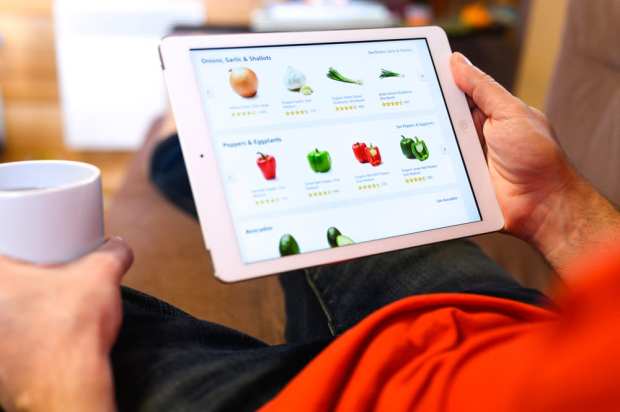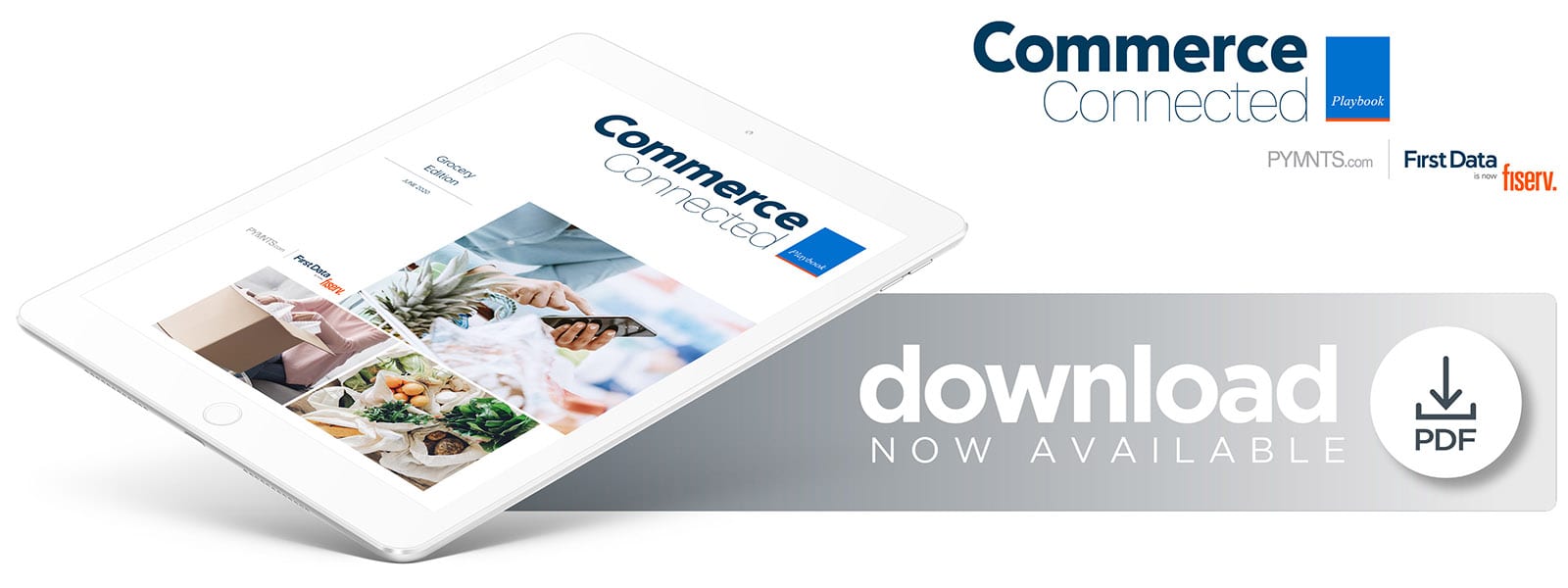What The COVID-19 Pandemic Is Revealing About Grocery’s Online, Mobile Future

Consumers who were once loyal to in-store grocery shopping are now going digital to avoid visiting stores during the pandemic. To keep these “digital shifters” loyal, grocers must replicate their in-store experience on digital channels, says John Ross, CEO of the Independent Grocers Alliance. In the latest Commerce Connected Playbook, Ross discusses the challenges that come with enabling that experience — and how merchants can overcome them.
The COVID-19 pandemic has led consumers to try digital tools for grocery shopping, and the total number of online grocery orders in the U.S. reached a record 62.5 million by the end of April. That month saw 40 million customers head online to shop for groceries, and these customers are expecting their preferred chains to keep up with that shift.
Grocery stores — even those that have been working to shore up their online platforms for years — have needed to quickly adapt as the pandemic set in. At the same time, creating familiar experiences online or through mobile can be difficult, as each process is fundamentally different from visiting brick-and-mortar locations, according to John Ross, president and CEO of the Independent Grocers Alliance (IGA). Customers familiar with their preferred stores’ layouts must now adjust to seeing inventory on their screens, meaning poorly organized designs can quickly become frustrating. Purchasing from phones rather than desktop computers only compounds such difficulties.
“The majority of transactions are coming from mobile devices, not laptops or desktops,” Ross explained in a recent interview with PYMNTS. “Whatever model you have, you have to look [at it] through the lens of, ‘How is it going to appear on mobile devices, and how can we accelerate [that] experience for the shopper?’”
Enabling seamless digital experiences also means showcasing accurate store inventory, enhancing brand loyalty and confronting payment trends that have been brought into the spotlight by the COVID-19 outbreak. PYMNTS spoke with Ross as well as Jacki Snyder, senior director for payment services at grocery wholesaler and services provider UNFI, to discuss how the pandemic has changed the grocery industry, how grocers must adapt and what these changes mean for the industry’s future.
Confronting Inventory Questions
COVID-19 has highlighted grocers’ complex supply chains, as stores of all sizes typically stock thousands of items to appeal to shoppers’ tastes and needs. Variety is beneficial for brick-and-mortar customers because they can select from wide ranges of brands, but the selection can be overwhelming for those attempting to shop online for the first time, Ross explained. Products must be listed in ways that mimic in-store shopping’s convenience as much as possible.
“If you are [primarily a] grocery shopper, of the 35,000 things in your local grocery store, you probably only buy 100 [to] 115 [items], right?” he said. “Being forced to sit through that on a laptop, much less your mobile phone … [is much more difficult].”
Grocers are searching for digital tools that can provide the familiarity of shopping in physical aisles, Ross added — which is proving tricky, because no technology can exactly copy that experience. Inventory lists must now be optimized for digital channels amid continued growth in online traffic. Grocery retailers are also confronting the need for payment solutions that can swiftly handle that volume, Snyder said.
“There has been a huge increase in interest in eCommerce,” she explained. “In the month of April alone, UNFI received 129 requests for eCommerce payment setups — and that has not slowed down in May. Normally, we see between five and eight requests a month in the eCommerce space, so our retail customers are responding to the changing consumer needs for eCommerce delivery and curbside pick-up options.”
UNFI’s payment platform provides more than 2,800 merchants with easy access to online and in-store payment tools and helps grocers streamline their distribution chains. Online payments are on the rise, Snyder said, but consumers are still shopping in stores, and they will want to visit brick-and-mortar locations once the pandemic has passed.
“My sense is that post-COVID-19, consumers will continue to use eCommerce, but I believe we will see some shift back into stores,” she explained. “Consumers like to see their meat and produce, [and] they do not necessarily want to trust someone else to pick those products out for them. I think we will see a mix, but I certainly believe that eCommerce utilization will be higher than what it was pre-COVID-19.”
Enabling innovative payment experiences in brick-and-mortar stores is proving important for grocers. Contactless payments or automated checkout experiences are seeing interest as the pandemic continues, especially as consumers grow wary of paying with cash or plastic cards amid concerns that they may carry traces of the virus.
Contactless Payments’ Rising Importance
New payment technologies are costly to implement, meaning retailers must weigh such expenses against future revenues. The rush of users utilizing online and mobile has grocers reconsidering which tools to implement both in and out of their stores, especially if some can help to minimize COVID-19 exposure. Many consumers will avoid touching PIN pads or terminals if they can tap their cards and use contactless payments instead, Snyder noted.
“It is important for us to make sure that our retail customers understand contactless,” she said. “We have been working with them for some time to provide education and implementation support for contactless and, more recently, to prepare for the EMV contactless change. We believe most of them are in a good position to meet this need. I do think that the card brands are pretty sensitive to COVID-19, and they understand the role and safety benefits of contactless and the value it brings from a security perspective. That is also a real positive.”
This jump in contactless technologies may have implications beyond catering to changing consumer preferences, Ross noted, as it could shift relationships between grocers and their credit card providers. Credit networks are supporting typical plastic cards as well as contactless or mobile wallet payments, and they are seeing the same revenue bumps as their partner grocery stores. This uptick in transactions may lead to growth in the types of payment methods grocers can support for convenience as well as security.
Seamless customer experiences have been a priority since before the pandemic, and grocers are responding by tailoring their online platforms to meet consumers’ shifting needs. They are reexamining how they list their products online, seeking to support growing digital payment volumes and approaching their in-store operations with the same critical eye. Some are even exploring how flexible delivery hours or automation could support speedier transactions. Grocers and their payment providers must not get complacent, however. They will need to be prepared to craft new innovations and implement technologies for a future in which consumers expect more flexibility in how they shop and pay.

